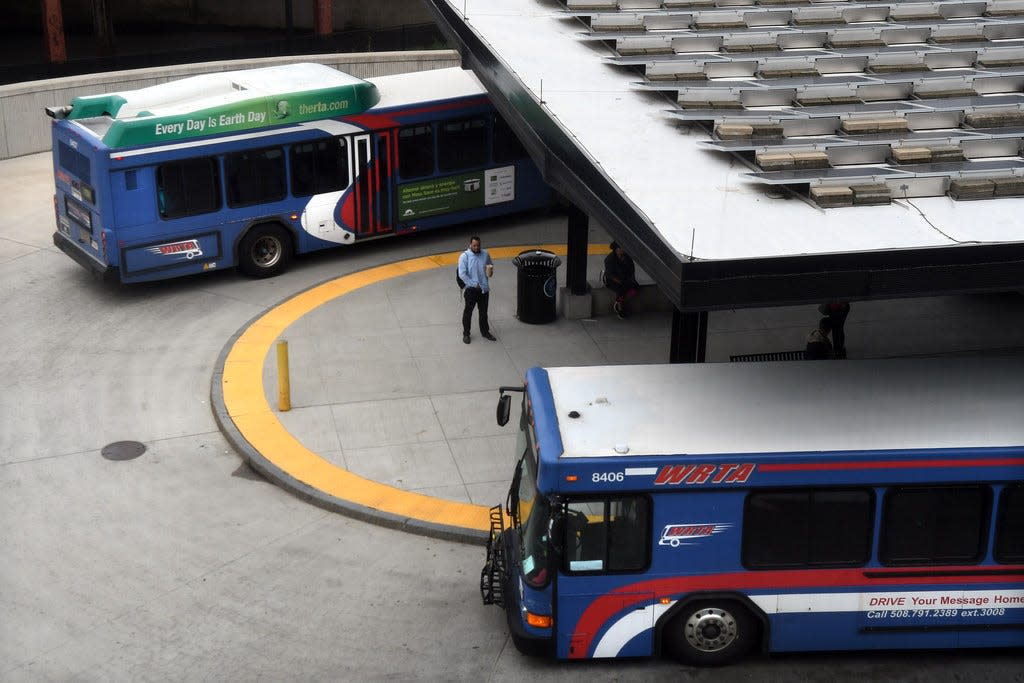Regional Research Bureau's report on WRTA cites 'exceptionally speedy ridership recovery'

WORCESTER - The Worcester Regional Transit Authority recovered quickly from ridership lows during the pandemic and is on track to meet its ridership peak in 2016, the Worcester Regional Research Bureau details in its latest report.
“The WRTA's exceptionally speedy ridership recovery, with 140% of 2019 pre-pandemic values by the end of 2022, may be due in part to the fare-free service begun in March 2020,” reads the report, titled “Resurging Regional Ridership: An analysis of mobility flows, riders, and ridership in the WRTA region.”
“More years of fare-free service would require that the WRTA design strategies to continue its upward trend in ridership,” the report states.
The bureau advocated for a fare-free Worcester Regional Transit Authority in a May 2019 report, and the idea quickly gained traction in the city as a way to boost the transit authority’s ridership, make the system more economically and socially equitable, and help the environment.
COVID-19 impact
But it took the coronavirus pandemic to implement the change.
The WRTA suspended fares in March 2020, and instituted rear-door boarding to ease congestion and allow greater social distancing. It also substantially reduced service as ridership plummeted while people stayed home.
Since then, the advisory board has extended the fare-free rides multiple times, the last time being until June 2023.
It also made fare-free service a part of the annual budget discussions.
In the first budget discussion for 2024, the WRTA Audit and Finance Committee unanimously recommended continuing fare-free service another year by using Coronavirus Aid, Relief and Economic Security Act money to make up for lost passenger revenue.
The latest bureau report, released Wednesday, analyzes the riders and ridership recovery of the WRTA, as well as regional mobility, which it said is “key to understanding the context within which the WRTA’s riders choose to use its service.”
Research Bureau findings
It found that:
The pandemic doubled remote work and halved the use of public transit for work commutes in Worcester.
Nearly 10% of those from Worcester traveled to Shrewsbury and Auburn, while 47% of workers from those two communities traveled to Worcester. A further 8% of Worcester residents commuted to Suffolk County for work.
Public transit users have a younger median age and a higher poverty rate and Black and Hispanic populations are overrepresented.
Although “work” is the No. 1 reason to take the bus, 61% of riders use it for other purposes (medical, shopping, social, etc.), and 44% of riders use it daily. Sixty-five percent of riders made less than $25,000 a year, and 70% didn’t own a vehicle.
The WRTA achieved complete pre-pandemic ridership recovery in early 2022 and closed the year with a 140% recovery rate, above peer agencies in the state which haven’t reached 2019 values.
“A strong WRTA, using evidence-based strategies aligned with regional planning efforts, has the potential to maximize its impressive regional ridership achievements for years to come,” the report concludes. “Connecting the many residents of our region to one another and to the economic, educational and social opportunities found within our communities, is key to the entire region’s success prosperity, and continued economic well-being.”
This article originally appeared on Telegram & Gazette: Worcester Regional Research Bureau releases report on WRTA

